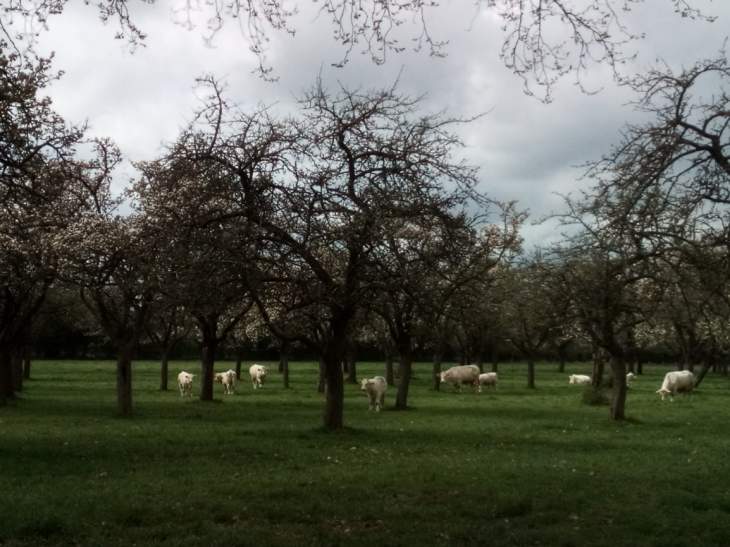Potential benefits for the farmer
 Shade - planting trees will create shade. This will mostly be a positive for livestock on farms who will benefit from reduced stress from the hot sun. The majority of forage species also perform better with some shade so grass / legume productivity could also increase.
Shade - planting trees will create shade. This will mostly be a positive for livestock on farms who will benefit from reduced stress from the hot sun. The majority of forage species also perform better with some shade so grass / legume productivity could also increase.
With silvoarable systems the relationship is potentially more complex. Where the crop meets the tree there is likely to be some competition and possible lost yield. The expectation would be that the other benefits of a diverse system will compensate for those losses. Some horticultural crops may benefit from some shade (for instance salad crops) so in horticultural systems, particularly with coppiced tree layer, a planned rotation can take advantage of that shade.
Shelter - trees provide protection from wind. This helps to create warmer microclimates (typically 4+ degrees C) that can help both livestock and crops. Animals that don’t have to spend so much energy keeping warm can put that energy into producing milk or meat. The increased temperature can lengthen the growing season, perhaps allowing earlier crops, increased grazing days, or even some crops that might struggle in cooler conditions.
Diverse diet -Trees typically have higher levels of micronutrients than forage and higher tannins. Including tree browse in livestock improves health and potentially reduces internal parasites. The increase in soil biodiversity under trees can also benefit poultry who will supplement their diet by eating insects and other soil creatures.
Soil improvement - agroforestry systems have the potential to build soil health through a range of impacts like increased soil organic matter, improved drainage, and protection from wind and rain erosion. This will improve the resilience and productivity of farms, particularly against extreme weather events
Biodiversity - increases in biodiversity can help the farmer. Increased numbers of predators and pollinators can help with crop health and reduced requirements for inputs of plant protection products.
Potential benefits for the landscape
Many of the benefits for farmers will also have a wider positive impact to help combat our climate and biodiversity crises. Planting trees has an almost immediate benefit for wildlife. The trees themselves and the undisturbed soil beneath them provide habitats for insects, birds and mammals and more. Some species such as Lichen and certain birds and moths, thrive in sparsely planted systems, since they need both trees and light. Woodlands and forests are too dark for them.
The trees will have an impact on the movement of water within a landscape. This is most likely to be a positive impact, with increased infiltration and reduced risk of flooding, though in some circumstance it can negatively impact drier soils.
Trees sequester carbon in a number of ways; in their own roots and branches, by encouraging fungal populations which also build carbon, and by improving soil health enabling higher levels of soil organic matter. The change in management brought about by a move towards agroforestry can also help to increase carbon in the non tree parts of the farm, for instance by a shift towards rotational grazing in the alleys between tree rows
Trees have been proven not only to improve the flow of water in soils, but also to improve the quality of water exiting the farm. Agroforestry systems can have lower particulate, phosphorus and nitrogen levels than those without trees.
More about the potential benefits of agroforestry for the farmer and the landscape can be found here. More examples about the (financial) benefits can be found here. (English)